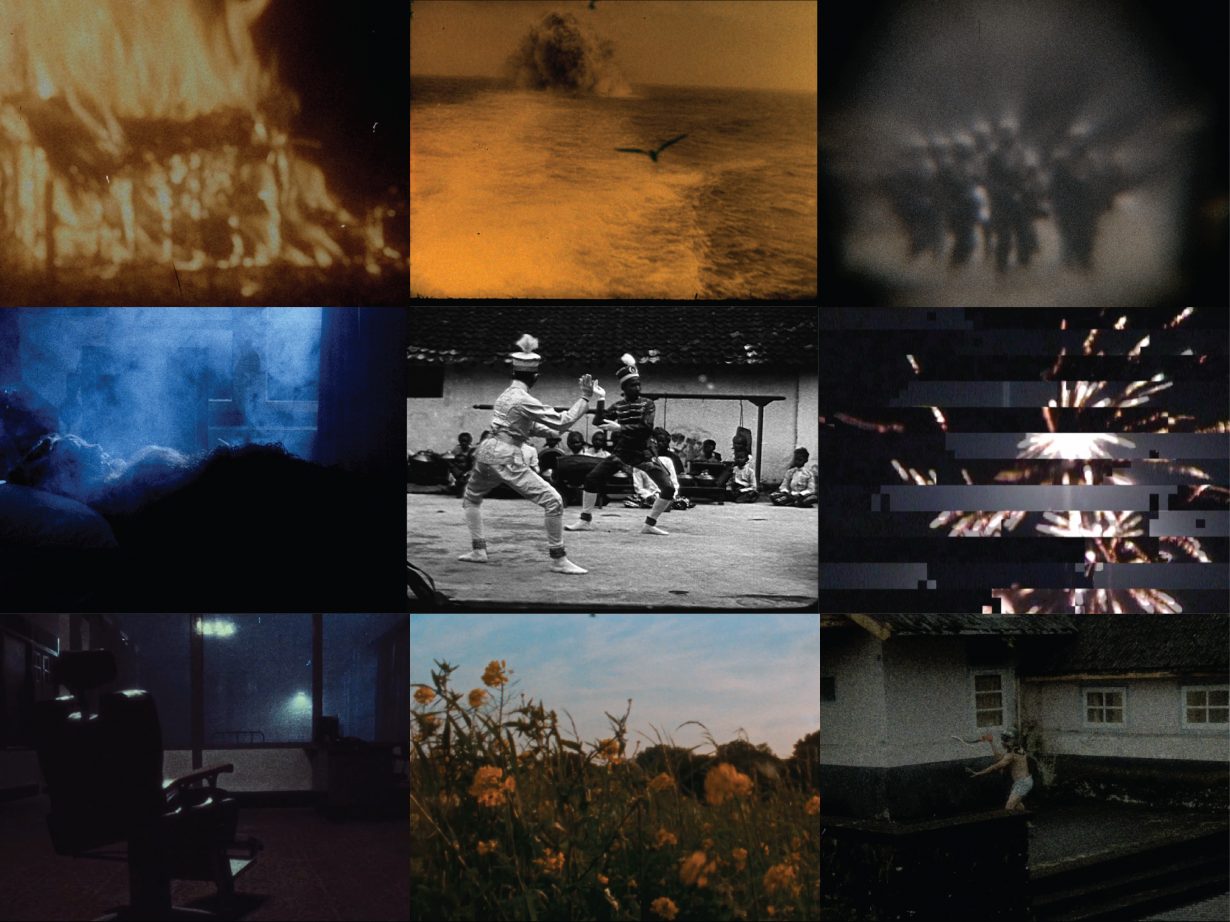The artist confronts unresolved historical trauma through fictional archives and ghostly apparitions

Spread across two floors, this exhibition explores the ghosts of Indonesia’s colonial past (highlighting in particular the role played by the Dutch) and the nature of historical memory. Fever Dream gathers paintings, photographs, sculptures and videos made by Timoteus Anggawan Kusno during his decade-plus-long practice; collectively, these works demonstrate the many roles he assumes, from ethnographer and arthouse filmmaker to installation artist.
On the first floor, viewers enter what seems to be a disorganised office – perhaps the back-room of an archive – where costumes, printed matter and paintings are haphazardly placed on a shelf, some leaning against the wall or facing backwards. In glass cases standing on a central wooden table are filmstrips that can be viewed through a magnifying glass. They depict rural landscapes and are drawn from the Centre for Tanah Runcuk Studies (ctrs) project, a pseudo-institute that Kusno established in 2012 to generate discourses about a fictional ‘lost island’ in the Dutch East Indies. In this show, we see artificially aged watercolour maps of the island (Peta Tanah Runcuk, 2016–17) and pencil drawings of its flora and fauna made in the same style as colonial-era botanical illustra- tion (ctrs 3 Sumatera, 2016).
ctrs allows Kusno to examine how historical memory is constructed through monocultural sources (codified knowledge, propagandistic photography) that were established under colonial reign and, in turn, which details from the past become sidelined. He uses the archive as a starting point and modifies it to conjure alternative narratives of precolonial agrarian life that merge myth and reality. Take Equus ferus sonitus – Collection of Centre for Tanah Runcuk Studies (2014), a series of archival prints depicting rural activities, such as farming or hunting, that involve a mythical, horselike animal whose head takes the shape of a cone. This creature appears repeatedly in Tanah Runcuk-related artworks, among them a depiction suggestive of a ghost in the relatively recent oil painting Postcard from Tanah Runcuk (2022).
The second-floor display features videos that expand on the concept of hauntings as linked to historical trauma and violence. In the video essay Tunggang Langgang (2024) the narrator begins by querying the untold deaths of Indonesian Independence fighters during the Dutch period of occupation, before wandering into a sugarcane plantation where more bloodshed was made possible, he believes, by the expansion of factories and other industrial infrastructure. The work ends with a Jathilan dance scene in which a spirit trapped in the dancer’s body is finally released. In the room next door, some images and figures that have already been encountered reappear in the three channel video Fever Dream (2024). Scenes of dancers, plantations and railways play out quickly and hypnotically on big screens; some familiar and some strange. Mixing up scenes of history and fantasy at a delirious pace, the work suggests how repressed and unresolved historical trauma is linked to feverish hallucinations and experienced as a kind of sickness.
Fever Dream at Kohesi Initiatives, Yogyakarta, 30 June – 25 August